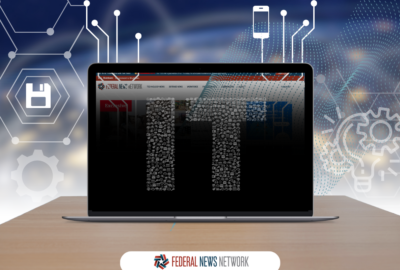Sweeping AI memo directs potential acquisition changes
A top Biden administration official says meeting the goals of the new AI memo will require "dramatically reimagining" acquisition and procurement.
Agencies will need to identify changes to acquisition regulations aimed at streamlining procurement of artificial intelligence capabilities under a sweeping AI memo issued by President Joe Biden today.
The new national security memorandum on AI follows up on Biden’s AI executive order from last fall. The new memo directs actions “designed to galvanize federal government adoption of AI to advance the national security mission, including by ensuring that such adoption reflects democratic values and protects human rights, civil rights, civil liberties and privacy,” the White House said in a fact sheet.
During an address at National Defense University in Washington this morning, National Security Advisor Jake Sullivan said the overarching goal is to ensure the Defense Department, the intelligence community and the broader U.S. government stay ahead in the AI race.
“Even if we have the best AI models, but our competitors are faster to deploy, we could see them seize the advantage in using AI capabilities against our people, our forces and our partners and allies,” Sullivan said. “We could have the best team but lose because we didn’t put it on the field.”
The memo covers a range of areas, from computer chips, immigration and workforce to frontier model testing and international collaboration.
But it also delves into acquisition and procurement, directing DoD, the Office of the Director of National Intelligence and the Office of Management and Budget to establish a “working group to address issues involving procurement of AI by DoD and IC elements” within 30 days.
And within 210 days — which could fall in next May — the working group is directed to provided written recommendations to the Federal Acquisition Regulatory Council on potential changes to regulations and guidance. The memo directs the changes to meet multiple objectives, including accelerating AI procurement while ensuring objective metrics are in place to promote the “safety, security and trustworthiness of AI systems.”
Sullivan said the faster AI adopt envisaged by the memo “means dramatically reimagining our acquisition and procurement system, our testing, validating and fielding system.”
“It will also mean what FDR once called bold and persistent experimentation and risk taking, and that means all of us getting a bit out of our comfort zones,” Sullivan continued. “We have to make sure that we are doing things in a responsible way.”
He pointed to how Ukraine has sought to rapidly adopt and integrate AI-enabled technologies as part of its conflict with Russia.
“From my perspective, this should be absolutely the kind of textbook we can then apply to reshape the U.S. military across the board, in terms of its ability to rapidly adopt and iterate this technology,” Sullivan said. “And what makes this technology different is it’s not just about the long lead time for a precision strike missile or an aircraft or a surface combatant. This is about a combination of hardware and software, where the weapon system as it looks today might look slightly different a month from now and then, slightly different from that a month later and so forth.”
Sullivan applauded fast fielding efforts such as the Replicator initiative, but said DoD will need to adopt systemic changes to development, procurement and deployment.
‘It’s going to have to be thought of less as, ‘Hey, we have a particular initiative on technology,’ and more as, this is just the way we do business across every element of our acquisition and procurement,” Sullivan said.
The memo also directs the working group to identify changes that could simplify processes “such that companies without experienced contracting teams may meaningfully compete for relevant contracts, to ensure that the United States Government has access to a wide range of AI systems and that the AI marketplace is competitive.”
And it aims for acquisition changes that would accommodate shared AI use “to the greatest degree possible.”
Sullivan said the memo’s focus on nontraditional vendors means “quickly putting the most advanced systems to use in our national security enterprise, just after they’re developed, like how many in private industry are doing.”
“We need to be getting fast adoption of these systems, which are iterating and advancing, as we see every few months,” Sullivan added.
AI Safety Institute
The memo also establishes the AI Safety Institute as the “primary United States Government point of contact with private sector AI developers to facilitate voluntary pre-and post-public deployment testing for safety, security, and trustworthiness of frontier AI models.”
The institute is located within the Commerce Department’s National Institute of Standards and Technology.
The memo directs Commerce to establish “an enduring capability to lead voluntary unclassified pre-deployment safety testing of frontier AI models on behalf of the United States government, including assessments of risks relating to cybersecurity, biosecurity, chemical weapons, system autonomy, and other risks as appropriate.
And the memo directs the adoption of a “Framework to Advance AI Governance and Risk Management in National Security.”
Sullivan the framework should help with the goal of speeding up AI adoption.
“Ensuring security and trustworthiness will actually enable us to move faster, not slow us down,” he said. “Put simply, uncertainty breeds caution. When we lack confidence about safety and reliability, we’re slower to experiment, to adopt, to use new capabilities, and we just can’t afford to do that in today’s strategic landscape.”
Copyright © 2025 Federal News Network. All rights reserved. This website is not intended for users located within the European Economic Area.
Follow @jdoubledayWFED






